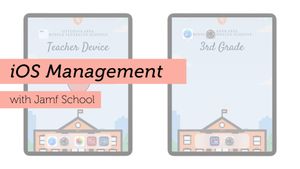While virtual reality (VR) technology has made a big comeback in recent years, a related type of interface with equal or greater potential for education is augmented reality (AR). Instead of providing an immersive sensory experience like VR, AR plays with the ability to layer real and digital worlds on top of each other and explore the interactions between them. Popularized in mobile apps such as Pokémon Go, AR apps and projects allow students to experience digital representations of objects and concepts with a novel sense of immediacy when they are situated in a real environment.
AR learning activities facilitate learning both inside and outside the classroom, so they can provide a wonderful opportunity in K-12 education to get kids out of doors and stimulate their senses. But they also tend to be equally effective for students who are learning from home, perhaps isolating on the property but able to enjoy a trip to the back yard or garden. This suitability for in-person and distance learning proved to be a powerful asset during the COVID-19 pandemic, with many schools closing initially and later requiring educators to juggle between on-campus and remote teaching models.
In "Transforming learning and engaging students with AR," a presentation from the Bett 2022 conference in London, digital teaching and learning specialist (and Apple Distinguished Educator) Lyndsey Stuttard explains how ACS International Schools have succeeded in integrating AR into K-12 curriculums, improving learning outcomes and empowering teachers. With three campuses in Greater London and one in Doha, Qatar, ACS aims to instill an education that is global in orientation and focused on mastering necessary skills for the future. Using AR supports that mission with activities that target a wide variety of subjects and audiences; teachers also enjoy support ranging from ready-to-use projects to highly customizable environments and assets they can use to build learning activities from the ground up.
iPad tools for powering educational AR experiences
Stuttard provides a description of key tools available on the iPad that enable or enhance dynamic AR learning activities. These include:
- Camera – The iPad’s built-in camera serves as the primary input for the real-world aspect of an AR experience, allowing for the layering of real and digital that comprises the core of AR. Students can use the Camera app to make digital alterations to images and video they take of the world, using editing, markup and filters to add their own personal touch.
- Screen recording – Students can use this feature to create a record of their reactions and thought processes while navigating an AR experience. Not only can this help them to capture their unfiltered thoughts, but it also conveys to parents what and how they are learning with nuance and emotional resonance that a written journal often fails to capture.
- Keynote Live – A new feature introduced with iPadOS 15, Keynote Live allows users to add a live video feed to Keynote presentations. ACS educators have worked with students to integrate AR content into these video feeds, empowering them to share their work in a presentation format.
- USDZ files – A file format devised by Apple in collaboration with Pixar, USDZ files are archives that serve as containers for 3D or AR content. These allow ACS students to easily locate and download AR resources to support the curriculum. Teachers create many of these files and store them in a curated collection organized visually with emojis in the folder titles and tags.
Recommended AR apps for K-12 education
So where should educators interested in exploring AR begin? Stuttard helpfully lists some apps that ACS educators have found particularly useful, along with explanations of what purposes they have used them for.
- WWF Forests – The World Wildlife Federation’s tool allows students to visit a virtual forest, discover animal and plant life, gauge human impact and curate their own spaces.
- My Very Hungry Caterpillar – Pre-K learners enjoy early exposure to AR with a simple interface and the popular storybook character created by Eric Carle.
- RakugakiAR – Students can power original narratives by scanning their artwork and bringing it off the page and to life. Screenshots from the scenes that they create can be used as illustrations for the stories that they write starring their creations.
- AR Makr – A highly popular AR app for iPad, AR Makr provides a large content library for students and educators to build projects tailored to their own unique needs and specifications. It integrates with other apps like Keynote and is well suited for explaining abstract concepts and ideas.
- Play-Doh TOUCH – While this isn’t what would typically be considered an AR app, Studdard includes it as a tool for bringing real objects into an exciting digital world. In one activity, students draw monsters, create physical models of them, then scan the models into the app where they act as avatars to explore digital environments and play games.
- JigSpace – With a large library of ready-to-use AR content that is easy to explore, JigSpace makes AR accessible to teachers without much of a learning curve. ACS educators especially like to use it for science activities like learning about ocean exploration.
- Reality Composer – A sort of digital sandbox for AR content, this app is useful for teachers who want to create their own experiences. They can customize 2D and 3D objects, add behaviors and animations, and layer in audio responses and background music. One ACS activity involved bringing the Polar Express train onto campus for students who had been reading the classic book.
Access and engagement in the classroom and at home
To end the presentation, Stuttard makes some concluding remarks about the experience of ACS in implementing AR into the curriculum, noting key factors in their success. The 1:1 iPad program at ACS begins for students at the age of four, and throughout their school years they encounter purposeful and consistent use of the technology in learning environments. Teachers, some of whom barely knew how to use an iPad beforehand, learn the technology alongside their students, empowering them to develop new technical skills and expand their teaching toolkits.
AR technology stands out in its ability enhance access to, and engagement with, learning. One teacher created an ancient Egyptian marketplace, complete with immersive sound and music, that students could walk through. And during the pandemic lockdown, students were able to navigate a haunted pumpkin patch and cemetery while solving Halloween-themed math problems – all from the confines of their home gardens. In bridging the real and digital worlds, AR helps to erase the divide between on-campus and distance learners, all while adding a sense of immediacy for students and visibility for parents who want to know what their children are learning in school.
Read more BETT Apple at School content:
- Zero touch deployment: as easy as ABC
- Streamlining deployments and updates in Mac labs
- How Explain Everything fosters engaged learning
- Learning technology at Heronsgate Primary School
- Focused creativity in the classroom with Apple and Jamf
- Google + Apple at Holy Trinity CofE Primary School
- iPad and Showbie: personalized feedback and impactful learning
- Balancing tradition with innovation at RGS Worcester
- From the classroom to full remote: a fast learning curve
- Using Microsoft, Google and other identity providers with Jamf School
- iPad learning anywhere, anytime
Watch the on-demand webinar now!
by Category:
Have market trends, Apple updates and Jamf news delivered directly to your inbox.
To learn more about how we collect, use, disclose, transfer, and store your information, please visit our Privacy Policy.






